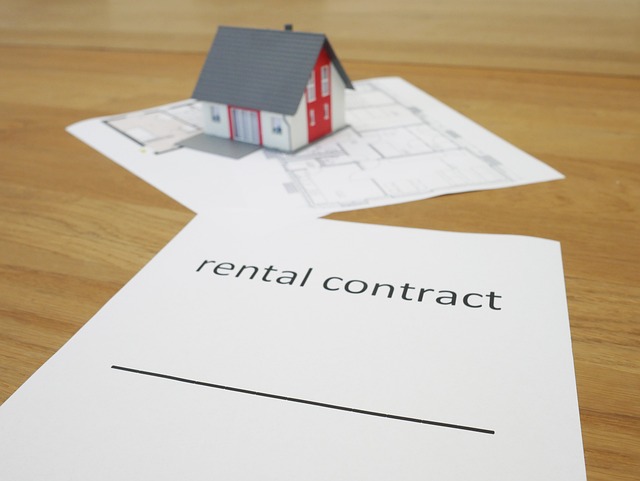Explore Container Homes in Ireland for 2025: Modern Living Options
Container homes are drawing fresh attention in Ireland as flexible, fast-to-deliver living spaces that can suit rural plots, compact urban sites, and short-stay accommodation. For 2025, interest is shaped by planning rules, energy standards, and budget realities. This guide outlines what to expect, how costs stack up, and where container-based solutions fit among modern building options.

Interest in container-based living is growing across Ireland as people look for efficient, compact homes that can be delivered quickly and tailored to different sites. In 2025, the appeal links to sustainability goals, space constraints, and the desire to reduce build time. Yet a container is only a steel shell until it meets Irish building regulations, energy efficiency requirements, and local planning rules. Understanding where containers excel—and where they demand extra work—helps set realistic expectations for timelines and budgets.
Container Holiday Homes in Ireland
Container holiday homes can work for short-term accommodation on private land or as part of a small hospitality venture. Their compact footprint, durability, and ease of transport make them attractive for seasonal use. However, most Irish sites will still require planning permission for a new dwelling, even for short-stay units, plus compliance with building regulations for structure, fire safety, insulation, ventilation, and wastewater. In coastal areas, corrosion protection and marine-grade coatings are worth considering, while rural plots will need an appropriate wastewater solution and safe access. For tourism use, the fit-out quality—acoustics, heating, and ventilation—matters as much as the aesthetic, especially in cooler months.
Self-Build Home Construction Costs
Self-builders often view containers as a cost-control strategy, but the overall budget depends on more than the shell. Typical line items include the container(s) themselves, foundations and anchoring, insulation and thermal breaks, structural alterations, glazing, services (water, power, wastewater), and interior fit-out. In Ireland, a cargo-worthy 20 ft unit can add useful space but must be upgraded to meet nearly zero energy building expectations. As broad guidance, a simple, well-insulated conversion may land in the €1,200–€2,000 per m² range for the living area, excluding site-specific works. Site preparation, services connection, and professional fees can add €20,000–€60,000 or more depending on location, ground conditions, and design complexity. Costs rise with multiple containers, extensive steel cutting, large glazing, and premium finishes.
Most Expensive House in the World?
Container homes sit at the opposite end of the spectrum from the most expensive house in the world, which usually reflects palatial size, rare materials, and one-off craftsmanship. The value proposition of containers is different: controlled budgets, speed, and resource efficiency. Instead of trophy features, the focus is on precise engineering—thermal bridges, vapor control, acoustic comfort, and compliance. For many Irish homeowners, success means a quiet, warm, durable dwelling with a solid Building Energy Rating, not architectural extravagance. That contrast helps clarify expectations: containers are about smart, compact design rather than luxury spectacle.
Navigating Irish planning and compliance Before committing, outline the planning route with your local authority. While certain minor works can be exempt, a new residential unit typically requires permission, and development contributions may apply. For compliance, review structural design (especially if cutting openings), fire safety, Part L energy performance, ventilation strategy, radon measures, and moisture control. Engage local services early—an RIAI-registered architect or architectural technologist, an engineer for structural details, and qualified contractors for airtightness and insulation. In coastal and damp environments, specify coatings and detailing to limit corrosion and condensation risk. Early design coordination reduces rework and unexpected costs later.
Real-world pricing and provider examples (Ireland/EU) Below is a compact snapshot to ground expectations. Figures are indicative for 2025, vary by specification and region, and exclude planning approvals and local taxes unless noted.
| Product/Service | Provider | Cost Estimation |
|---|---|---|
| Used 20 ft shipping container (unconverted) | Adaptainer, CARU Containers | €2,000–€4,000 per unit |
| Modular container building module (shell, non-residential) | CONTAINEX | €7,000–€20,000 per module (spec-dependent) |
| Timber-frame modular home (comparison) | Scandinavian Homes (Ireland) | €1,500–€2,500 per m² (indicative, spec-dependent) |
| Professional design and compliance | RIAI-registered architect (Ireland) | ~8–12% of build cost or €60–€120/hour |
| 3–5 kW domestic solar PV (for small dwellings) | SEAI-registered installer (Ireland) | €4,000–€8,000 before grants |
Prices, rates, or cost estimates mentioned in this article are based on the latest available information but may change over time. Independent research is advised before making financial decisions.
Budget pointers for 2025 • Structure and envelope: Prioritise insulation, thermal breaks, and windows; cutting large openings increases steelwork and thermal detailing cost. • Site works: Groundworks and wastewater can exceed the shell price; allow contingency for difficult access or poor soil. • Energy performance: Aim for airtightness targets and robust ventilation; compact dwellings benefit from simple, efficient systems. • Procurement: Balance DIY and specialist trades; welding, structural work, and compliance documentation usually need qualified professionals.
Conclusion In Ireland, container homes can deliver compact, durable spaces for primary living or holiday use, provided they are planned and engineered to local standards. Costs can be competitive for simpler designs on straightforward sites, while complex layouts or challenging locations narrow the price gap with other modern methods of construction. For 2025, the most successful projects will combine realistic budgets, early professional input, and careful specification to meet comfort, energy, and compliance goals.




